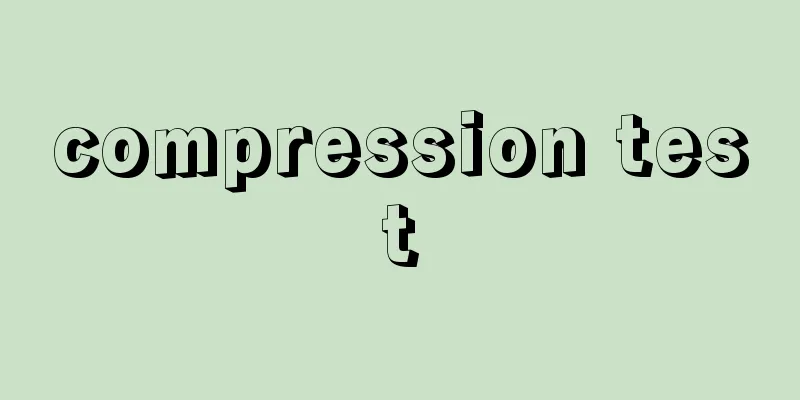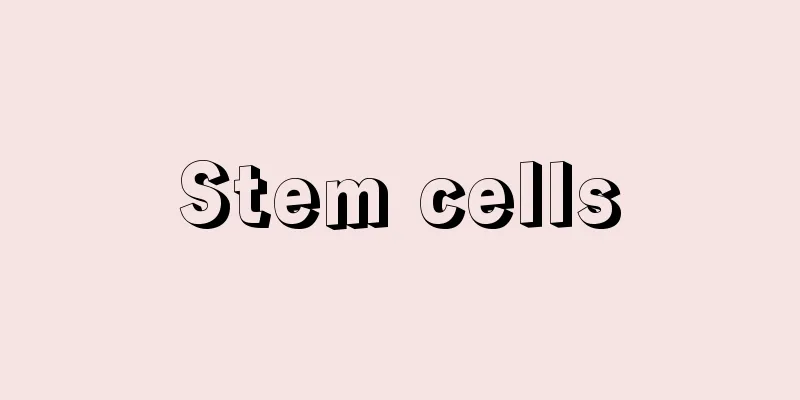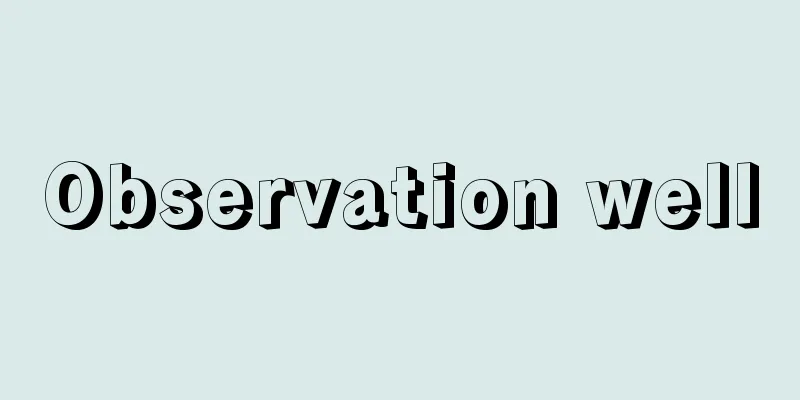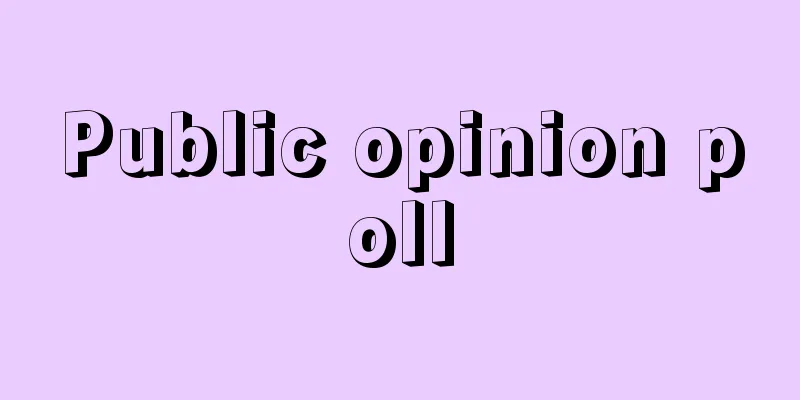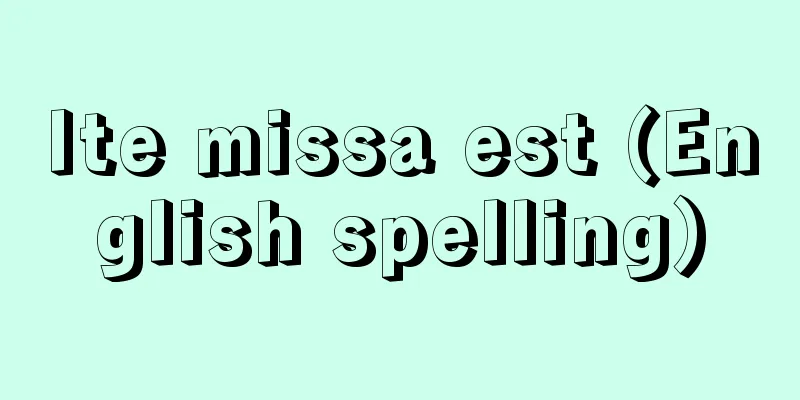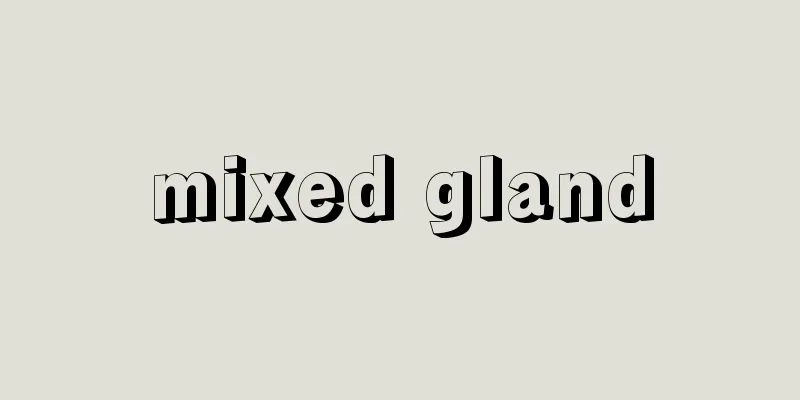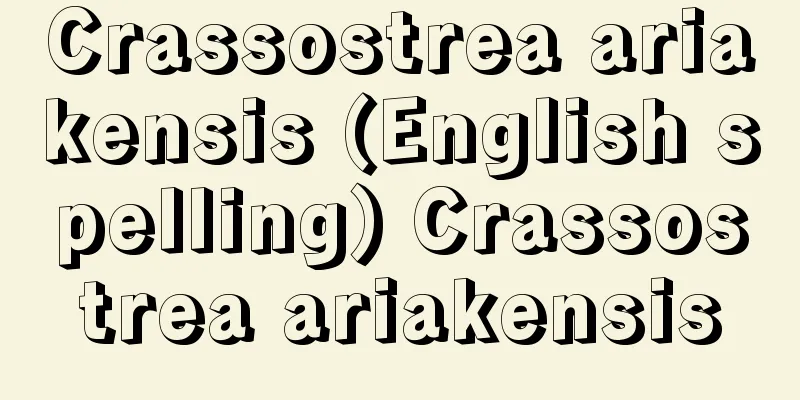Maternal and child health - Boshihoken (English)
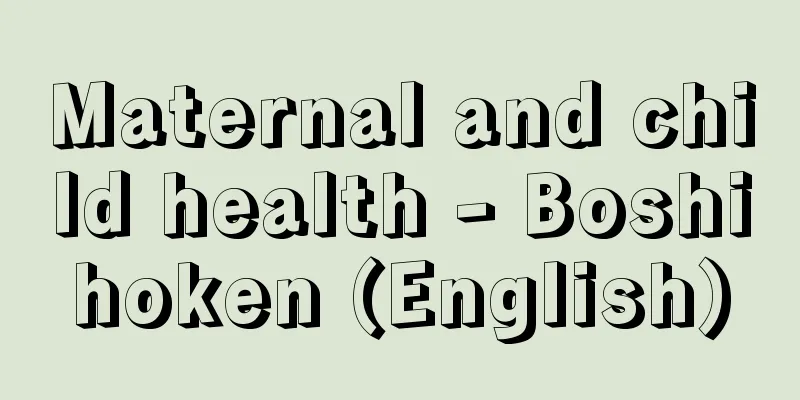
|
The field of endeavoring to maintain and promote maternal and pediatric health, as well as the business and academic fields aimed at that end. [Munehiro Hirayama] historyUntil the 19th century, welfare activities were mainly focused on charitable work to support the health and lives of mothers and children in Europe. The long-established European children's hospitals developed from orphanages. At the end of the 19th century, the development of pathogenic microbiology made it possible to conduct activities based on medicine, and in the 20th century, the establishment of the United States Children's Bureau by then-President W. H. Taft was carried out as an administrative project in the United States. The purpose of this was to protect the happiness and lives of children of all classes, and it also adopted the idea that protection of infants and young children is impossible without the protection of mothers. In Japan, by the early Showa period, a movement to reduce infant mortality rates, such as the establishment of child health centers, began, and the Maternal and Child Care Association was established in 1934 to commemorate the birth of the Crown Prince (now Emperor Akihito), and health activities to reduce maternal and child mortality rates began, mainly in rural areas, with the help of volunteers from the Care Group. After the Second World War, under the guidance of GHQ (General Headquarters of the Supreme Commander for the Allied Powers), the Child Welfare Act was enacted (1947), which provided for the distribution of maternal and child health handbooks, health checkups and guidance for pregnant women and infants, medical treatment for premature babies, and the promotion of childbirth in facilities. In 1965 (Showa 40), the Maternal and Child Health Act was enacted, and maternal and child health programs have been implemented under this law ever since. During this time, until the early Showa period, the infant mortality rate (per 1,000 live births) was over 100 (the highest recorded was 188.6 in 1918), but in recent years it has broken the world's record low, dropping to 90.0 in 1940 (Showa 15), 30.7 in 1960, 7.5 in 1980, 3.2 in 2000, and 2.6 in 2006. During this same period, the maternal mortality rate (per 100,000 births) also declined from 228.6 in 1940 to 117.5 in 1960, 19.5 in 1980, 6.3 in 2000, and to 4.8 in 2006 (actual number was 54). [Munehiro Hirayama] Scope of activitiesA child's health begins at fertilization, continues from prenatal to postnatal, and is strongly influenced by the mother's physical and mental health. Therefore, maternal and child health activities, administrative services, and research are conducted from the standpoint of considering both mother and child health at the same time. Specifically, from the standpoint of preventive medicine, which aims to eliminate factors that impair the health of mothers and children, the following areas are listed: (1) infectious disease control, (2) nutritional errors and deficiencies, (3) prevention of congenital abnormalities, (4) accident prevention, (5) physical and chemical environmental problems (environmental pollution, etc.), and (6) social environmental problems and mental problems. For these reasons, research, promotion of health education, and support and services in the areas of health, medicine, and welfare must be provided. Meanwhile, maternal and child health personnel must play the role of coordinator to solve many of these problems. In addition, with the start of the Heisei era, the declining birthrate began to become a problem, and measures such as helping parents balance work and childcare responsibilities and providing childcare support to reduce childcare anxiety became important, and activities for these purposes have come to be included in maternal and child health. [Munehiro Hirayama] Maternal and Child Health Programs/AdministrationBased on the Maternal and Child Health Law, maternal and child health programs and administration are carried out at the national, prefectural and municipal levels through close cooperation between research and educational institutions, private specialist organizations and local volunteer groups. The outline of these programs is as follows: (1) Health measures, such as pregnancy notification, issuance of maternal and child health handbooks, health guidance, health checkups (for pregnant women and infants), tests for congenital metabolic disorders (mass screening), and projects to prevent mother-to-child infection with Hepatitis B, etc. Maternal and Child Health AdministrationAt the national level, the center of maternal and child health administration is the Maternal and Child Health Division of the Employment Equality and Child Families Bureau of the Ministry of Health, Labor and Welfare, and the General Affairs Division, Childcare Division, and Child Development Environment Division of the same bureau are in charge of child and family welfare-related matters. The Tuberculosis and Infectious Diseases Division of the Health Bureau is in charge of infectious disease prevention and vaccinations, and there are many other departments involved in maternal and child health and welfare. In the Ministry of Education, Culture, Sports, Science and Technology, the School Health Education Division of the Sports and Youth Bureau is the center of school health. In prefectures and designated cities, there is a section in charge of maternal and child health within the health and welfare department, and as a branch office, the health center is in charge of liaison, coordination, and guidance with the municipalities under its jurisdiction. In 1994, the Health Center Act was changed to the Community Health Act, and the Maternal and Child Health Act was also revised to make personal health services the responsibility of municipalities (fully implemented from 1997), and maternal and child health services in the community, along with welfare services, are now the responsibility of municipalities. School health is carried out by the prefectural and municipal boards of education. [Munehiro Hirayama] Future direction of maternal and child healthThe future of maternal and child health in the 21st century has been under consideration since the days of the Ministry of Health, Labor and Welfare, and reports such as the Study Group on Maternal and Child Health in a New Era (1989) and the Study Group on Future Maternal and Child Medical Care (1992) were issued. As a measure to combat the declining birthrate, the "Angel Plan" (1994) and the "New Angel Plan Five-Year Plan" (1999) were formulated, outlining the basic direction of policies for supporting child rearing in the future. In 2000, "Healthy Japan 21" was announced, focusing on the prevention of lifestyle-related diseases, as a guideline for Japan's national health promotion campaign in the 21st century, and was followed by the formulation of "Healthy Parents and Children 21," which could be considered the maternal and child health version of this plan. These indicated issues and goals to be achieved for the first 10 years of the 21st century, but were reexamined five years later, and the targets were revised. Despite these measures, the declining birthrate has not been halted, so the government has formulated the "Children and Childrearing Support Plan" (December 2004) and "New Measures to Combat the Falling Birthrate" (June 2006) to promote maternal and child health programs. These include ensuring and improving obstetric care and emergency pediatric care, visiting every household with an infant up to four months old (the "Hello Baby" program), strengthening the function of local networks to protect children, and strengthening childrearing support. In December 2007, the government also compiled the "Key Strategies for a Japan Supporting Children and Families." This strategy does not consider "employment" and "marriage, childbirth, and childrearing" to be either/or, but rather aims to promote both work and childrearing, comprehensive support for childrearing at home, and the realization of work-life harmony by reviewing working styles. The outline of "Healthy Parents and Children 21" is as follows: (1) Strengthening health measures for adolescents and promoting health education "Maternal and Child Health Science" by Kokubu Yoshiyuki and Iwata Masaharu (1978, Shindan to Chiryousha)" ▽ "Maternal and Child Health Textbook" by Maternal and Child Health Research Group and Hirayama Munehiro (1994, Maternal and Child Health Foundation)" ▽ "Interpretation and Implementation of the Maternal and Child Health Law, supervised by the Maternal and Child Health Section of the Child and Family Bureau, Ministry of Health, Labor and Welfare (1997, Chuohoki Publishing)" ▽ "Guidance, Education and Counseling on Maternal Health 1: Life Cycle Edition" edited by Aoki Yasuko (1998, Life Science Center) ▽ "Maternal and Child Health Manual" edited by Takano Akira and Yanagawa Hiroshi (2000, Nanzando)" ▽ "Major Maternal and Child Health Statistics, various annual editions (Maternal and Child Health Foundation)" [Reference items] | | | | | |Source: Shogakukan Encyclopedia Nipponica About Encyclopedia Nipponica Information | Legend |
|
母性ならびに小児の健康の保持・増進を図ること、またそのための事業、学問の分野。 [平山宗宏] 歴史19世紀までは、おもにヨーロッパにおける母子の健康や生活を支援する慈善事業を中心とした福祉活動であった。歴史の古いヨーロッパの小児病院は孤児院から発展している。19世紀末ごろには病原微生物学の発展などにより、医学を基礎においた活動が可能になり、20世紀に入ってアメリカで当時の大統領W・H・タフトによる合衆国児童局の設立が行政的事業として行われた。これはすべての階級の子どもの幸福と生命の保護を目的としており、乳幼児の保護は母性の保護なしにはできないとする考えも取り入れられた。わが国では、昭和初期までに小児保健所の設立などの乳児死亡率を下げるための運動が始まり、皇太子(現明仁(あきひと)天皇)のご生誕を記念して母子愛育会が設立され(1934)、農村を中心として母子の死亡率を下げるための保健活動が愛育班のボランティアを中心として始められている。第二次世界大戦後はGHQ(連合国最高司令官総司令部)の指導のもとに、まず児童福祉法が制定され(1947)、同法の下で母子手帳の配布、妊産婦や乳幼児の健康診査・保健指導、未熟児医療、施設内分娩(ぶんべん)の推進などが行われた。1965年(昭和40)母子保健法が制定され、以後は同法の下で母子保健事業が進められている。この間、昭和初期まで乳児死亡率(出生1000人対)は100以上であったが(記録上最高は1918年の188.6)、1940年(昭和15)90.0、60年30.7、80年7.5、2000年3.2、06年2.6、と近年では世界最低の記録を更新している。妊産婦死亡率(出産10万対)もこの間に1940年228.6から60年117.5、80年19.5、2000年6.3、06年には4.8(実数は54人)まで低下している。 [平山宗宏] 活動の範囲子どもの健康は受精に始まり、出生前の母体内から出生後に至るものであり、母親の心身の健康の影響を強く受けるので、母子の健康を同時に考えるという立場から、母子保健活動も行政サービスも、また研究も行われている。具体的には、母子の健康を損ねる因子を除去するという予防医学の立場からは次のごとき分野があげられる。(1)感染症対策、(2)栄養の過誤や不足などの問題、(3)先天異常の予防、(4)事故の予防、(5)物理的・化学的環境問題(環境汚染など)、(6)社会的環境問題・心の問題などであり、このための研究、健康教育の推進、保健・医療・福祉面での支援・サービスなどが付随しなければならない。一方、母子保健担当者はこれら多くの問題を解決するためのコーディネーターとしての役割を担う必要がある。 また、平成に入るとともに少子化が問題となり始め、その対策として親の就労と育児の両立支援、育児不安軽減のための育児支援などが重要となり、そのための活動も母子保健に含まれるようになってきている。 [平山宗宏] 母子保健事業・行政母子保健事業・行政は、母子保健法に基づき、国、都道府県、市町村の各レベルにおいて、研究教育機関、民間専門団体、地域のボランティアグループなどが密接な連携をもって事業やサービスを展開している。その概要は以下のごとくである。 (1)保健対策として、妊娠届、母子健康手帳の交付、保健指導、健康診査(妊産婦・乳幼児)、先天性代謝異常の検査(マススクリーニング)、B型肝炎母子感染防止事業など 母子保健関係の行政組織国のレベルで母子保健行政の中心になるのは、厚生労働省雇用均等児童家庭局の母子保健課で、子ども家庭福祉関係は同局の総務課、保育課、育成環境課などが担当している。母子保健のなかで感染症予防や予防接種関係は健康局結核感染症課であり、その他母子の保健や福祉にかかわる部局は多い。文部科学省で学校保健を担当しているのは、スポーツ・青少年局学校健康教育課が中心である。都道府県と政令市では保健福祉担当部局のなかに母子保健を担当する課があり、出先機関として保健所が管下の市町村の連絡・調整・指導にあたる。1994年(平成6)に保健所法が地域保健法に変わり、母子保健法も改正されて対人保健サービスが原則的に市町村実施となったので(1997年から完全実施)、地域における母子保健サービスは福祉サービスともども市町村が責任をもって実施することになった。学校保健は都道府県と市町村の教育委員会が行う。 [平山宗宏] これからの母子保健の方向21世紀の母子保健のあり方については、厚生省時代から検討が行われており、新しい時代の母子保健を考える研究会報告(1989)、これからの母子医療に関する検討会報告(1992)などが出され、少子化対策としては、今後の子育て支援のための施策の基本的方向を示す「エンゼルプラン」(1994)と「新エンゼルプラン5か年計画」(1999)が策定された。2000年(平成12)には、21世紀における日本の健康づくり国民運動の指針として生活習慣病の予防を中心とした「健康日本21」が発表され、引き続いてその母子保健版ともいうべき「すこやか親子21」が策定された。これらは21世紀初頭10年間の課題と到達目標を示していたが、5年後に再検討が行われ、目標値の見直しなどが行われた。これらの施策にもかかわらず、少子化に歯止めがかからないため、「子ども・子育て応援プラン」(2004年12月)、「新たな少子化対策について」(2006年6月)を策定して母子保健事業を進めている。これには産科医療や小児救急医療の確保充実、生後4か月までの乳児がいる家庭への全戸訪問事業(こんにちは赤ちゃん事業)、子どもを守る地域ネットワーク機能強化、子育て支援の強化などを含んでいる。また、政府は2007年12月に「『子どもと家族を応援する日本』重点戦略」を取りまとめた。ここでは「就労」と「結婚・出産・子育て」は二者択一ではなく、仕事と子育ての両立と家庭における子育てを包括的に支援、働き方の見直しによる仕事と生活の調和の実現の両方を車の両輪として進めることとしている。なお「すこやか親子21」の概要は次の4本の柱である。 (1)思春期の保健対策の強化と健康教育の推進 『国分義行・岩田正晴著『母子保健学』(1978・診断と治療社)』▽『母子衛生研究会・平山宗宏著『母子保健テキスト』(1994・母子保健事業団)』▽『厚生省児童家庭局母子保健課監修『母子保健法の解釈と運用』(1997・中央法規出版)』▽『青木康子編『母性保健をめぐる指導・教育・相談1 ライフ・サイクル編』(1998・ライフ・サイエンス・センター)』▽『高野陽・柳川洋編『母子保健マニュアル』(2000・南山堂)』▽『『母子保健の主なる統計』各年版(母子保健事業団)』 [参照項目] | | | | | |出典 小学館 日本大百科全書(ニッポニカ)日本大百科全書(ニッポニカ)について 情報 | 凡例 |
>>: Raisin (raisin) - Raisin (English spelling)
Recommend
Yoshimichi Hasegawa
Year of death: January 27, 1924 Year of birth: Aug...
Nibugi (English spelling) er-bu-ji
A system of music for banquets and ceremonies in t...
Nakayama family
A family of nobles since the late Heian period. A...
Katayamazu Tamazukuri ruins
A general term for the 4th century Tamatsukuri rui...
Gotarzes I (English spelling)
…It was during his reign that the Parthians first...
Pārśvanātha (English spelling) Parsvanatha
...The first Tirthankara was called Rishabha (col...
Agrippa, HC (English spelling) AgrippaHC
…German thinker. His real name was Heinrich Corne...
Weihaiwei (English spelling)
A port city on the northern coast of the Shandong ...
Abd al-Moomin
...The Arabization of Morocco progressed from bot...
Kuroshio Old Land
A land that is believed to have existed to the sou...
Lange, CG (English spelling)
…American psychologist W. James argued that emoti...
Academic Freedom
…After the Renaissance, as academic fields develo...
Radioecology - radioecology
A field of study that studies the behavior of radi...
Epimenia ohshimai (English spelling)
…[Tadashige Nabe]. . … *Some of the terminology t...
Cut wheat - Kirimugi
〘Noun〙 ("Mugi" means noodles ) A food ...
